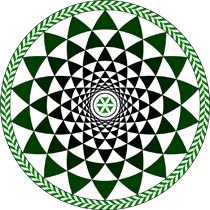Speaker
Dr
MONIKA MARZEC
(Institute of Physics, Jagiellonian University)
Description
`Liquid crystal displays (LCDs) remain in frequent use since the construction of the first nematic-based display. From that time, their importance as an image display technology is steadily growing. This occurs because of the constant development of both new liquid crystalline materials and new approaches to their application. The antiferroelectric liquid crystal (AFLC) exhibiting tilt angle ca. 45$^\circ$ are called orthoconic antiferroelectric liquid crystals (OAFLC) and they are very attractive materials for use in new kind of LCD. Ferroelectric as well as antiferroelectric liquid crystals are also promising as similar improvements in other optoelectronic devices. [1,2] The development of this field requires constant search for new liquid crystals both pure compounds and mixtures, as well as valuation of their properties relevant to use in various optoelectronic switches. In particular, the mutual miscibility of many pure compounds is a greatly valuable method to design new liquid crystals exhibiting desired qualities. [3]`
`The aim of this work was to study the physical properties of three new ferroelectric mixtures for purpose of their potential application in optoelectronic devices. The studied mixtures consist of two chiral compounds 6F2OBi and 3F7HBM6(S) mixed in proportions 3:1, 1:1 and 1:3 and denoted as W-331-1, W-331-2 and W-331-3, respectively. Both ingredients were studied by us earlier [4,5]. One of the ingredients (6F2OBi) is ferroelectric liquid crystal while 3F7HBM6(S) is antiferroelectric one exhibiting antiferroelectric SmC$_{A}^\ast$ phase next to ferroelectric SmC$^\ast$.`
`Properties of chosen mixtures were studied by complementary methods such as dielectric, electrooptic, calorimetric and XRD. It was found that addition of 3F7HBM6(S) to 6F2OBi increases both melting and clearing points. Moreover, the tilted smectic overcools easily and is stabilised in low temperatures by electric field. So, the switching is observed down to 10÷15$^\circ$C, what means that it exists in the broad temperature range (ca. 100 degree), covered room temperature. The maximum value of spontaneous polarization was determined between 45 and 160 nC/cm$^{2}$, depending on the mixture while the tilt angle achieves saturation close to 45$^\circ$, what means that these mixtures belong to OAFLC. Additionally, the switching time is short, below 1 ms, for all studied mixtures. Therefore it may be concluded that W-331 mixtures are promising materials for the composition of the multicomponent mixtures based on the same or similar chemical compounds.`
References
[1] Lagerwall JPF, Scalia G. A new era for liquid crystal research: Applications of liquid crystals in soft matter nano-, bio- and microtechnology. `$\textit{Curr Appl Phys.}$` 2012, `$\textbf{12}$`, 1387-1412.
[2] Srivastava AK, Chigrinov VG, Kwok H-S. Ferroelectric liquid crystals: Excellent tool for modern displays and photonics. `$\textit{J Soc Inf Disp.}$` 2015, `$\textbf{23}$`(6), 253–272, DOI:10.1002/jsid.370.
[3] Bubnov A, Novotná V, Hamplová V, et al. Effect of multilactate chiral part of the liquid crystalline molecule on mesomorphic behaviour. `$\textit{J Mol Struct.}$` 2008, `$\textbf{892}$`, 151-157.
[4] Jan Czerwiec, Doctoral Thesis, Jagiellonian University 2011.
[5] Fitas J, Dłubacz A, Fryń P, Marzec M, Jaworska-Gołąb T, Deptuch A, Kurp K, Tykarska M, Żurowska M. New ferroelectric and antiferroelectric liquid crystals studied by complementary methods. `$\textit{Liquid Crystals}$` `$\textbf{44}$`, 566 – 576, 2017, DOI: 10.1080/02678292.2016.1225841.
Author
Mr
Jakub Fitas
(Institute of Physics, Jagiellonian University)
Co-authors
Aleksandra Deptuch
(Institute of Physics, Jagiellonian University)
Ms
Katarzyna Kurp
(Military University of Technology)
Dr
MONIKA MARZEC
(Institute of Physics, Jagiellonian University)
Dr
Magdalena Żurowska
(Military University of Technology)
Ms
Marta Szymkowiak
(Institute of Physics, Jagiellonian University)
Dr
Marzena Tykarska
(Military University of Technology)
Dr
Teresa Jaworska-Gołąb
(Institute of Physics, Jagiellonian University)

